
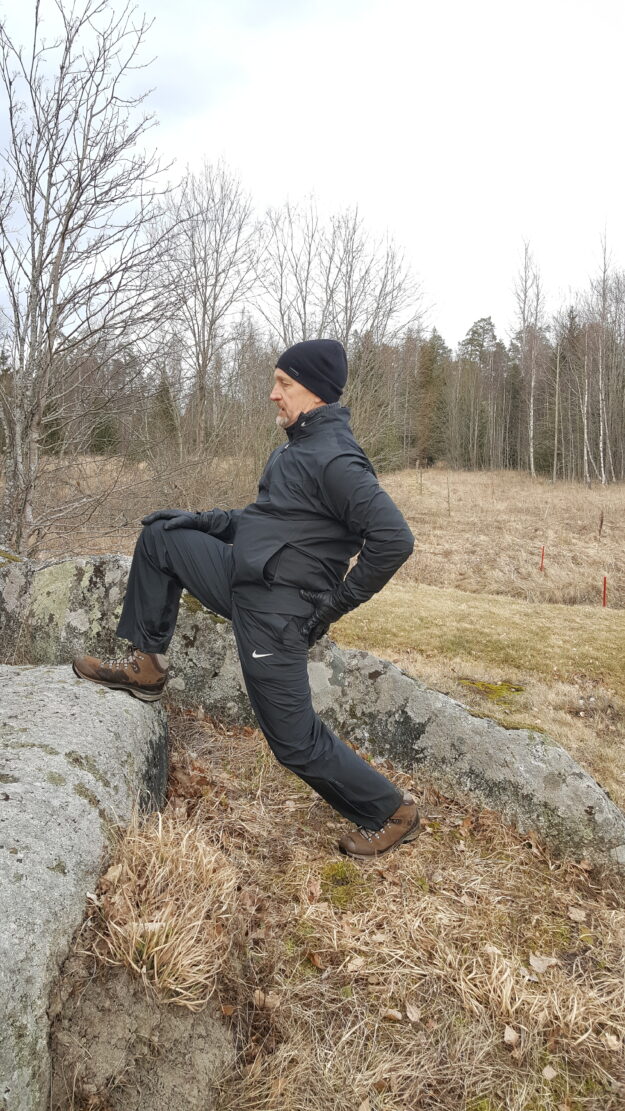
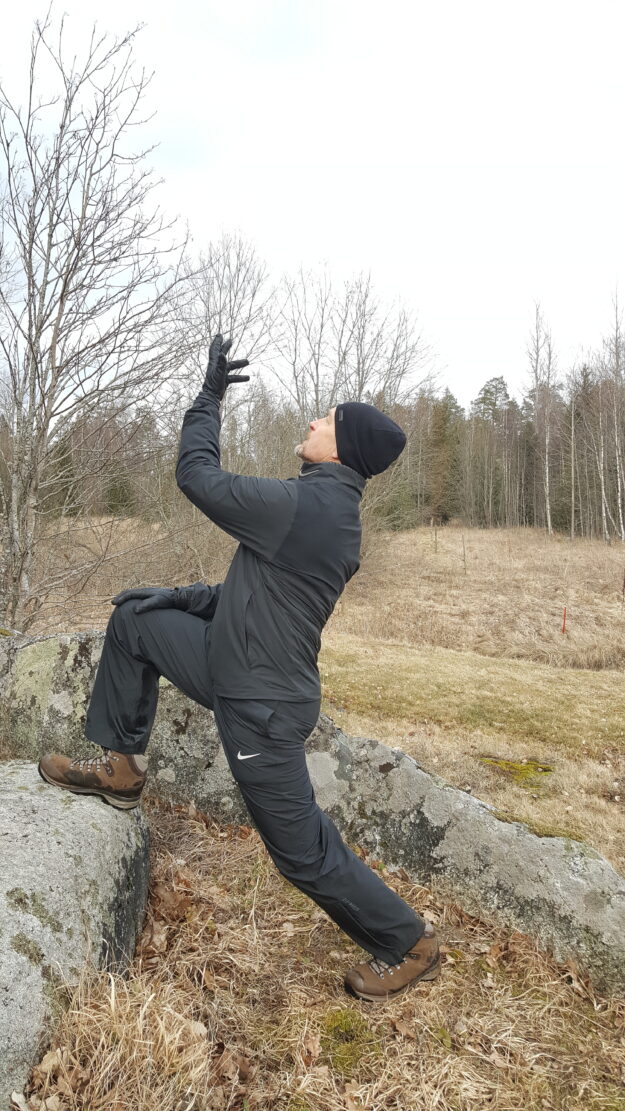
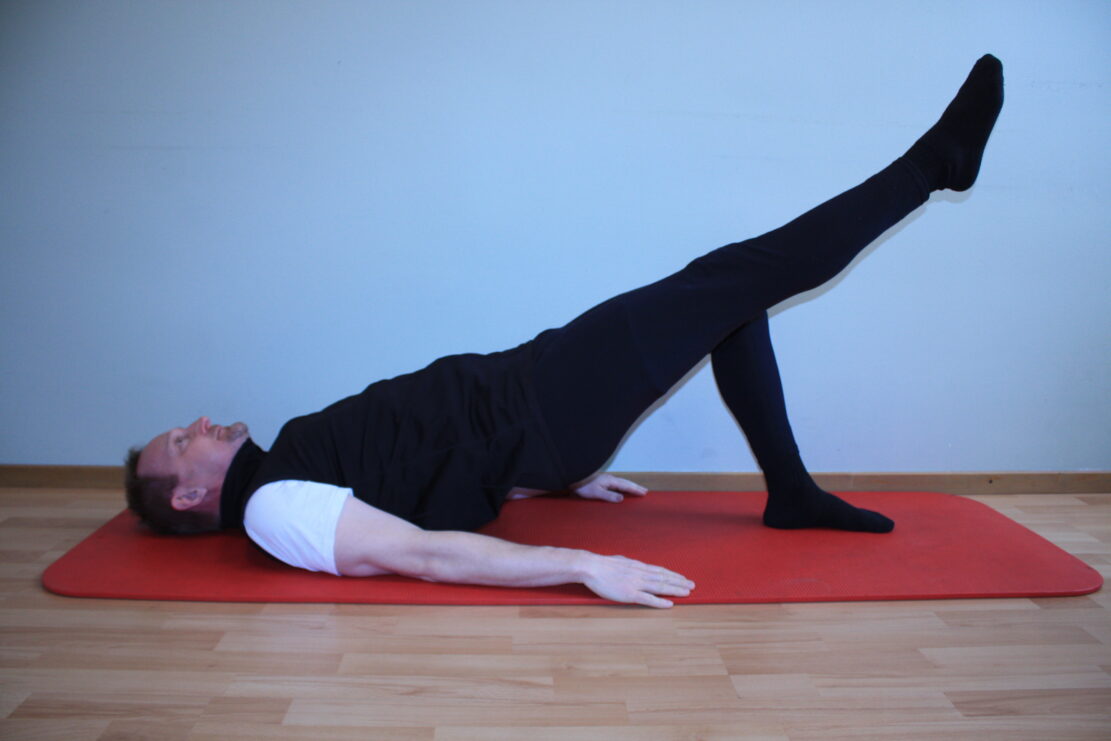
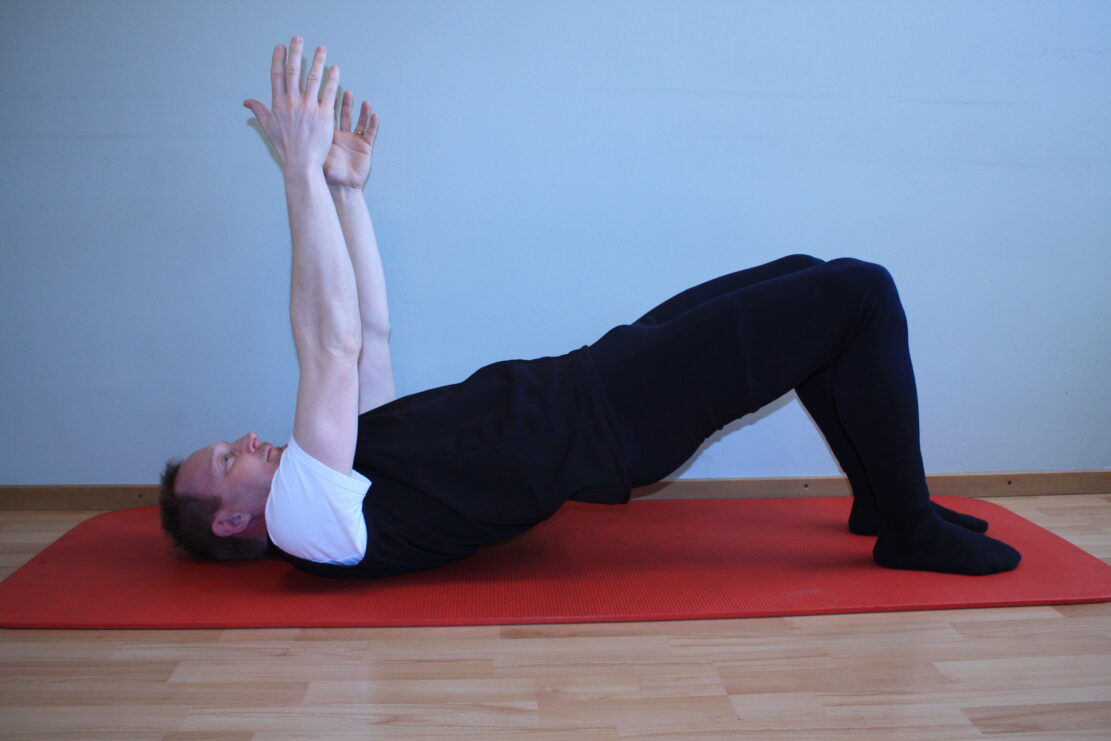
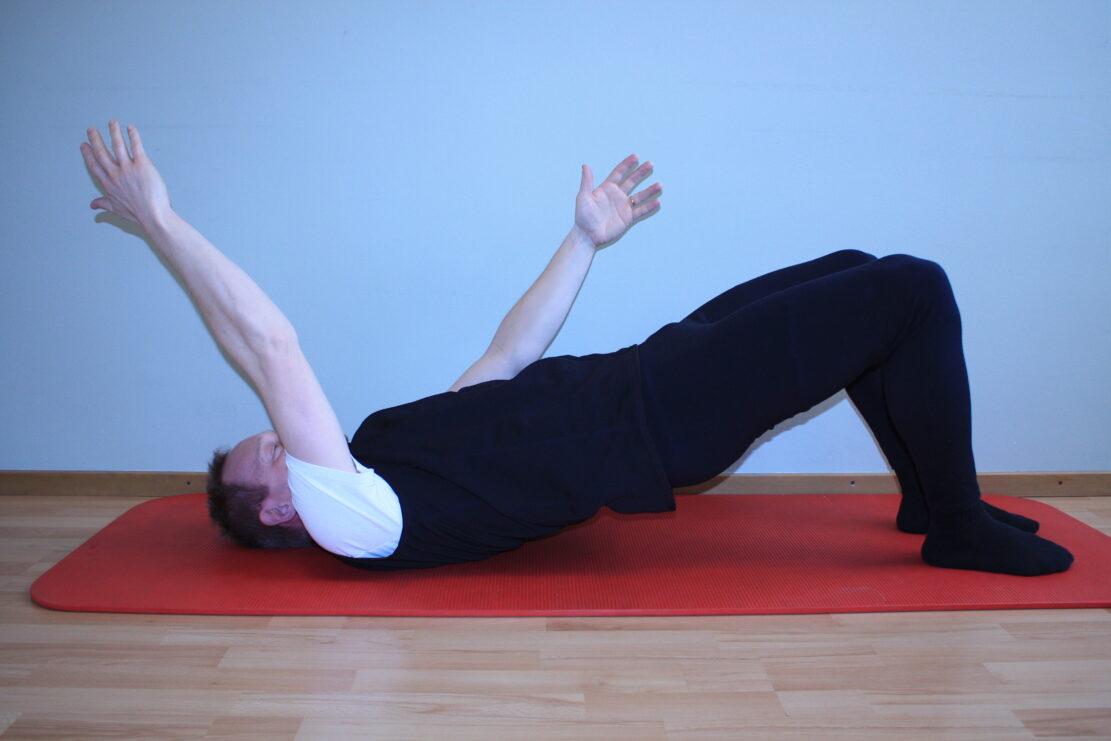
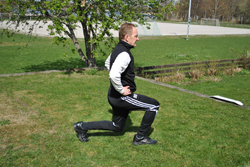
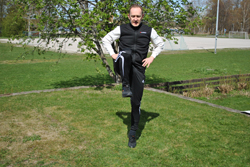
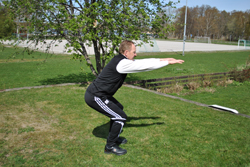
Strength and stability for the low back, hips and pelvis
This exercise program aims to improve the strength and stability of the low back, hip and pelvis. The focus is on hip muscle rotators, the gluteal muscles and the back of the leg while maintaining core in the low back. This program is for those who have good control of their core. Strengthening exercises include squats, lunges, Bulgarian squats, single-leg squats, crab walks with a gummiband, side-leg raises and hip thrusters.
Treatment depends specifically on cause of the problem, addressing soft tissues and mobilization of involved joints including the hip joint, the pelvis and lumbar spine. This program also addresses ischiofemoral impingement.
Squats
- Form is key, since performing squats properly can cut down the risk of injury during the move
- Keep your feet about shoulder-width apart with feet slightly turned outward
- Dialing your feet into the ground, use a screwing movement inwards to help engage your muscles, improve alignment, and create stability with the ground. It’ll also help keep your arches from collapsing, and keep your knees more neutral
- Your upper body also matters for squats. “Keep your chest up, your chest proud”. This will prevent your shoulders and upper back from rounding—a common mistake—which could overstress your spine, especially if you are squatting with weight on your back
- When you’re ready to squat, think about starting the movement by bending your knees and pushing your hips back. Engage your core for the descent, and keep it braced throughout the movement which is done slowly and controlled
- There’s lots of discussion about how low you should squat, but the average exerciser should shoot to hit parallel depth with their squats, meaning the back of your thighs will be parallel to the floor. Injury may prevent this so aim to end the squat at whatever depth is pain-free for you
- Once you reach the bottom of the squat, pause for a second so you are not using momentum to push yourself back up. (You can also increase the length of your pause to add difficulty to the move)
- Make sure your feet stay planted throughout the duration of the squat, paying particular attention to driving through your heels on the way back up. This will fire up your posterior chain—the muscles in the back of your body, like your hamstrings and gluts
- Some people have a tendency to pick up their toes when they’re focusing on driving through their heels, but you really want to make sure your entire foot stays firmly on the ground: Your big toe is actually really important in glute activation
- Making sure you breathe throughout the move—inhale on the way down, exhale on the way up—is vital. You do not want to be holding your breath
Lunges
Stand in a split stance with the right foot roughly 2 to 3 feet in front of the left foot. Your torso is straight, the shoulders are back and down, your core is engaged to create intra-abdominal pressure, and your hands are resting on your hips.
- Bend the knees and lower your body until the back knee is a few inches from the floor. Keep hips aligned to protect any knee deviation. At the bottom of the movement, the front thigh is parallel to the ground, the back knee points toward the floor, and your weight is evenly distributed between both legs
- Push back up to the starting position, by driving through your heel to maximally recruit your gluts keeping your weight on the heel of the front foot
Single-leg squat
- Start by standing on your right foot. The left foot is off the ground
- Keep your core engaged and your torso up throughout the movement
- Squeeze your glutes as you push into the right foot to stand back up
- Go only as low as you can maintain knee stability
Bulgarian Split Squat
- Stand 2 to 3 feet in front of a knee-high platform. Extend your right leg behind you and rest your toes on the bench
- Keeping your torso upright, slowly lower your right knee toward the floor
- Press up though heel maintaining stability in the knee
- Reverse the move and return to the starting position.
Crabwalk with resistance
Double up a resistance band and step into it, so it’s wrapped around your ankles. Keep your legs shoulder width apart and sink into a half squat. Walk to the left, then change direction after a few steps.
Side leg raises
- Lie down on your right side on a mat. Your body should be in a straight line with your legs extended and feet stacked on top of each other
- Place your arm straight on the floor under your head or bend your elbow and cradle your head for support. Place your left hand out front for extra support or let it rest on your leg or hip
- As you exhale, gently raise your left leg off the lower leg. Stop raising your leg when you feel the muscles flex in your lower back or abdominals
- Inhale and lower the leg back down to meet the right leg
- Avoid raising your leg too high throughout the exercise. Lower it when you start to feel pressure in the lower back or abdominal obliques
- Keep your core tight during the exercise as this helps relieve some of the pressure on your lower back
Banded Hip Thrust
- Start with your back and the bottom of your feet flat to the ground. Your shins should be perpendicular to the floor, knees pointed to the ceiling
- Wrap the resistance bands around the front of your hips, and loop the ends under your feet. You may be able to manipulate the level of resistance depending on where you anchor the band
- In a slow and controlled manner, raise your hip up into the air till you are fully extended. Push through the heels of your feet and focus on your glutes contracting to drive the motion. Be mindful to really engage your core and glutes
- Hold the position for a second or two, squeeze hard, and then slowly return to the starting position
Perform 5 to 10 reps of exercises on each side
Perform 3 sets